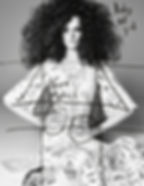Exploring Key Design Concepts in Photography: A Guide to Elevating Your Visuals
- Joe Matos
- Aug 9, 2024
- 2 min read
Every Thursday on my Instagram series, "Mood Board Thursday," I delve into essential design concepts that can transform your photography from simple snapshots into compelling stories. Whether you're a budding photographer or an experienced shooter looking to refine your skills, understanding these principles is crucial. Here’s a deeper look into some foundational and advanced design concepts that we explore:

Fundamental Design Concepts
1. Rule of Thirds: Perhaps the most well-known composition technique, the rule of thirds involves dividing the image using two horizontal and two vertical lines. Placing your subject along these lines or their intersections creates a more balanced and engaging photo.
2. Perspective: Changing your perspective can dramatically alter the mood and meaning of an image. From eye-level shots to bird’s-eye views, each perspective offers a unique dimension to storytelling.
3. Frame Within a Frame: Using elements within the scene to frame the subject can add depth and focus to your composition. This technique also helps draw the viewer’s eye directly to the main point of interest.
4. Negative Space: Employing a large expanse of unoccupied space around your subject can enhance the photo’s visual impact, emphasizing feelings of isolation or freedom.
5. Patterns and Textures: Capturing repeated patterns or interesting textures can create visually striking images that captivate the viewer’s attention.
6. Leading Lines: Use natural or architectural lines within your photo to lead the viewer’s eye towards the main subject. This technique is powerful for creating a sense of movement and depth.
Advanced Design Concepts
7. Color Theory: Understanding how different colors interact and affect emotions can be a game-changer in setting the tone of your photographs.
8. Symmetry and Asymmetry: Symmetry can convey balance and harmony, while asymmetry might introduce tension and interest, making your images more dynamic.
9. Juxtaposition: Placing contrasting elements together in the frame can highlight their differences and create a compelling narrative or visual punch.
10. Depth of Field: Manipulating what’s in focus can help isolate the subject, drawing attention to it while softening the background or foreground elements.
11. Golden Ratio: Similar to the rule of thirds, the golden ratio is a composition guide that provides a more naturally appealing balance to the human eye.
12. Scale and Proportion: Showing the scale of an object in relation to its environment can offer a surprising perspective and emphasize the story you wish to convey.
Join Me Every Thursday
Tune into my Instagram account @JoeMatosRunway every Thursday at 5 PM Eastern to see these concepts in action. Each week, we explore these principles through detailed examples and discuss how you can apply them to your own photography to create more meaningful and visually appealing images.
By integrating these design concepts into your photographic work, you not only enhance your technical skills but also deepen your artistic expression. Whether through creating mood, guiding viewer’s attention, or structuring the composition, these principles are the building blocks for mastering the art of photography.
